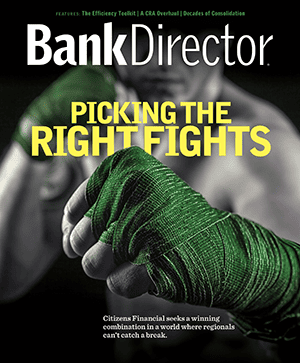
Coronavirus Sparks CECL Uncertainty
Even before COVID-19, the first quarter of 2020 was shaping
up to be an uncertain one for large public banks. Now, it could be a disaster.
There is broad concern that the current expected credit loss standard, which has been effective since the start of 2020 for big banks, will aggravate an already bad situation by discouraging lending and loan modification efforts just when the new coronavirus is wreaking havoc on the economy. Congress is poised to offer banks temporary relief from the standard as a part of its broader relief act.
Section
4014 of the Coronavirus Aid, Relief, and Economic Security Act, or CARES Act,
would give insured depository institutions and bank holding companies the
option of temporarily delaying CECL implementation until Dec. 31, 2020, or “the
date on which the public emergency declaration related to coronavirus is
terminated.”
Congress’ bill comes as the Financial Accounting Standards Board has already rebuffed the efforts of one regulator to delay the standard.
On March 19,
Federal Deposit Insurance Corp. Chairman Jelena McWilliams sent a letter to the
board seeking, among other requests, a postponement of CECL implementation for
banks currently subject to the standard and a moratorium for banks with the
2023 effective date.
McWilliams wrote that a moratorium would “allow these financial institutions to focus on immediate business challenges relating to the impacts of the current pandemic and its effect on the financial system.”
FASB declined to act on both proposals. “We’re continuing to
work with financial institutions to understand their specific challenges in
implementing the CECL standard,” wrote spokesperson Christine Klimek in an
email to me later that day.
It’s not an overstatement to say that the standard’s reporting
effective date could not come at a worse time for banks – or that a potential
delay necessitating a switch back to the incurred loss model may be a major
undertaking for banks scheduled to report results in the next several weeks.
“Banks are being tasked with something pretty complex in a
very short timeframe. And of course, this is the first period that they’re
including these numbers and a lot of the processes are brand new,” says Reza
Van Roosmalen, a principal at KPMG who leads the firm’s efforts for financial
instruments accounting change. “They’ve practiced with parallel runs. But
you’re immediately going to the finals without having had any other games. This
is the hardest situation you could be in.”
CECL has been in effect since the start of the new year for large banks and its impact was finally expected to show up in first-quarter results. But the pandemic and related economic crisis creates major implications for banks’ allowances and could potentially influence their lending behavior.
The standard requires banks to reserve lifetime loan losses
at origination. Banks took a one-time adjustment to increase their reserves to
reflect the lifetime losses of all existing loans when they switched to the
standard, deducting the amount from capital with the option to phase-in the
impact over three years. Afterwards, they adjusted their reserves using earning
as new loans came onto the books, or as their economic forecasts or borrowers’
financial conditions changed. The rapid spread and deep impact of COVID-19, the
bulk of which has been experienced by the U.S. in March, has led to a precipitous
economic decline and interest rate freefall. Regulators are now encouraging
banks to work with borrowers facing financial hardship.
“For banks, [CECL is] going to be a true test for them. It’s not just going through this accounting standard in the macroeconomic scenario that we’re in,” says Will Neeriemer, a partner in DHG’s financial services group, pointing out that the change comes as many bankers adjust to working from home or in shifts to keep operations running. “That is almost as challenging for them as going through the new standard for the first time in a live environment.”
The concern is that CECL will force allowances to jump once
more at the beginning of the standard as once-performing loans become troubled
all at the same time. That could discourage new lending activity – leading to
procyclical behavior that mirrors, rather than counters, economic peaks and
troughs.
It remains to be seen if that would happen if Congress doesn’t provide temporary accounting and provisioning relief, or if some banks decline the temporary relief and report their results under CECL. Regardless, the quarter will be challenging for banks.
“It’s temporary relief and it’s only for this year. It keeps
the status quo, which I think is important,” says Lawrence Kaplan, chair of the
bank regulatory group in Paul
Hasting‘s global banking and payments systems practice. “You don’t have to
have artificial, unintended consequences because we’re switching to a new
accounting standard during a period where there are other extraordinary
events.”



